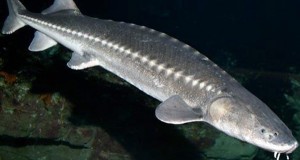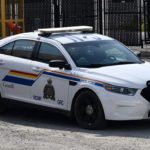Home »

Ktunaxa Nation participates in White Sturgeon conservation
Starting the week of September 18, the Ktunaxa Nation Council is joining its partners from the Upper Columbia White Sturgeon Recovery Initiative (UCWSRI) to collaborate in a Species At Risk Act permitted effort to scientifically sample and remove of a limited number of specific Sturgeon from the Columbia River, from the US-Canada border, upstream to the Hugh Keenleyside Dam.

“The recovery of wiyaǂ, or the White Sturgeon in the Upper Columbia is of vital importance to the Ktunaxa,” said Kathryn Teneese, Ktunaxa Nation Council Chair. “Despite the cultural and historical significance of wiyaǂ to the Ktunaxa Nation, we issued a self-imposed moratorium on harvesting Sturgeon that has been in place for many years. We are now at a place where the long-term survival of all wiyaǂ populations in our territory is threatened and we must act to ensure recovery.”
“The Ktunaxa Nation Council recognizes that Upper Columbia White Sturgeon remain endangered and are committed to continue working with our partners in the UCWSRI to recover the population,” said Dr. Will Warnock, Ktunaxa Nation Council Senior Aquatic Biologist. “Conservation aquaculture has always been guided by the best available scientific information, and has ensured the population will not be extirpated in any of our lifetimes. Although early efforts from this program may now require a bit of a course correction, this must be done in a controlled, careful manner to achieve recovery goals and collect necessary scientific information. This can also be done in a way that provides opportunities for the Nation to revitalize its traditional practices and reconnect with White Sturgeon while we work toward recovery.”
Backgrounder – Ktunaxa Nation Participating in White Sturgeon Conservation Actions in Upper Columbia
1. The Ktunaxa (pronounced ‘k-too-nah-ha’) are a people whose history and culture is intertwined with the White Sturgeon, or, in the Ktunaxa language, wiyaǂ.
2. Upper Columbia White Sturgeon are endangered in Canada; they have been listed under the federal Species at Risk Act (SARA), and this protection extends to hatchery-origin fish. The managing entity under SARA for their protection and conservation within the Canadian portion of the range is Fisheries and Ocean Canada (DFO).
3. The Ktunaxa Nation Council was fully involved with SARA listing processes, and is supportive of the current endangered listing status.
4. The Ktunaxa people voluntarily suspended activities to fish for and harvest White Sturgeon in their traditional territory of Miȼʾqaqas ʔamakʔis (the Arrow Lakes and Columbia region), after it became apparent that this population was declining in abundance and failing to successfully survive to adulthood in the wild (recruitment failure).

5. Recruitment failure is likely due to ongoing impacts from human activities on the river, but the specific cause(s) and solution(s) is not yet fully understood. Although its historic habitat was larger, the affected population in the Upper Columbia currently extends from Lake Roosevelt, in the US, upstream to the Revelstoke Dam in B.C.
6. The Ktunaxa Nation Council became active in the conservation and recovery of White Sturgeon, and has been a key participant of the Upper Columbia White Sturgeon Recovery Initiative (UCWSRI) since its inception. The UCWSRI guides White Sturgeon recovery primarily through an international technical working group of experts from many government agencies, First Nations, industry and stakeholders.
7. The UCWSRI oversees recovery efforts, including conservation aquaculture activities, which artificially propagates fish since survival of early life stages isn’t high enough to ensure persistence of the population into the future. The goal is to ensure survival of the species while natural recruitment is restored. The program has always been managed using the best available science of the time.
8. There are now many hatchery-origin White Sturgeon in the Columbia River, but it became apparent only recently that the majority of surviving fish from early stocking efforts are the offspring of very few parents. Although these hatchery fish now may outnumber the remaining population of wild adults, they have much lower genetic diversity. This unanticipated outcome was the result of early conservation aquaculture practices, which are now well understood and have since been changed.
9. Low genetic diversity may constrain the effectiveness of conservation aquaculture and the achievement of recovery goals. In order to avoid the negative consequences of this low diversity, the family structure of hatchery- origin sturgeon at large in the river should begin to be re-balanced.

10. For 2017 actions in Canada, the UCWSRI made management recommendations to DFO to begin to remove fish from over-represented families, in order to facilitate recovery. Aquaculture fish can be identified to one of these families by a microchip, which was implanted in the fish prior to its release.
11. In response to technical advice from the UCWSRI, DFO supported a 2017 conservation effort focused on the collection of data to further assess the long- term genetic risk to the wild population, and to ensure any future management actions are well informed and scientifically defensible. As part of this research, DFO supported the removal of some over-represented fish to maintain a genetic balance important for the species’ recovery.
12. The limited removal of some specific White Sturgeon from over-represented families in Canada must therefore occur in a very specific, careful manner, at least initially. Removals must not compromise an important, existing stock assessment program being guided by the UCWSRI, and fish must be positively identified as being from over-represented families prior to removal.
 13. DFO invited members from the UCWSRI, including the Ktunaxa Nation Council, to collaborate in the stock assessment program, permitted under SARA. The Ktunaxa Nation Council worked with various management agencies to plan collaboration in scientific and conservation efforts for 2017.
13. DFO invited members from the UCWSRI, including the Ktunaxa Nation Council, to collaborate in the stock assessment program, permitted under SARA. The Ktunaxa Nation Council worked with various management agencies to plan collaboration in scientific and conservation efforts for 2017.
14. The Ktunaxa Nation Council received a SARA permit, and will be accompanying its SARA permitted partners in scientific and conservation activities for portion of their program, beginning the week of September 18.
15. All specific fish that are planned to be removed will have extensive biological samples taken, in order to collect scientific information on the population that will ultimately guide recovery; however, these fish are large bodied, and the majority of muscle tissue on each removed fish is surplus to scientific needs. The Ktunaxa Nation Council will take possession of this surplus tissue caught during their participation in the stock assessment program, under a SARA permit issued by DFO.
16. If the Ktunaxa Nation determines that fish in their possession are safe to eat through further testing of contaminant levels, they will be prepared at Ktunaxa events and ceremonies, in accordance with cultural practices and to allow the Nation to begin to re-connect with the wiyaǂ.
Lead image: The Columbia River White Sturgeon display at Kootenay Trout Hatchery. e-KNOW file photo
Ktunaxa Nation







